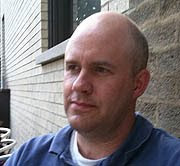I've long been an opponent of journalists using Wikipedia as a source for backgrounding people and issues they write about. (See a recent post on the topic.)
Exhibit A: CNN reported that a prankster posted false information on Michael Jackson's Wikipedia bio shortly after national media reported the pop star's death. The prankster wrote that Jackson was strangled by his brother, Tito, with a microphone cord.
Jackson's Wikipedia bio had more than 500 edits in 24 hours, some of the information accurate, some not. The site eventually had to block edits to the bio.
Advice I've always given student journalists: Use Wikipedia as a way of developing questions, not confirming answers. Go elsewhere to find the answers. But use Wikipedia carefully and sparingly. Because it's a wiki, anyone can post unconfirmed, false information to a bio. It's happened many times, and it has been picked up by the mainstream media.
And use the rule of three with any information you find. If you see a story or rumor, check it out with reliable sources. Internet-rumored deaths Jeff Goldblum, Harrison Ford and Sinbad in recent years all proved false once someone took the time to call a source close to the person.
Jackson's global appeal made the story the biggest Internet story ever in terms of traffic, surpassing even 9/11. But we need to factor in the fact that social media and mobile media attributed greatly to the surge of Jackson's traffic. Technology and news delivery platforms make a difference, as evidenced with this story.
The CNN story also reported that Google News, Twitter and celebrity gossip site TMZ had traffic issues after the story broke on Jackson's death.
Update: The Maynard Institute provided an in-depth analysis of the overwhelming coverage of Jackson's death.
The nation is lost
5 weeks ago








No comments:
Post a Comment